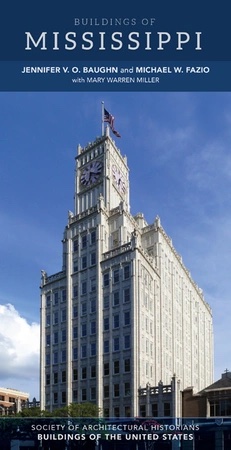
Respecting decorum, antebellum southerners tended to follow established architectural patterns and customs, but this corner-sited house offers a dramatic exception. The builder, cotton planter, and eventual Confederate general Jephat Vining Harris adopted not only the unusual and locally popular amalgamation of Greek, Gothic, Italianate, and Tudor features but also a three-dimensional composition that lies somewhere between the innovative and the unlikely. At its core stands a wooden, two-story, Greek Revival block with a T-hall plan. On the east facade, one-story verandas with attenuated octagonal columns supporting thin Tudor arches flank a central, two-story, paneled-columned, flat-roofed portico. On the north facade, the house’s stout first-floor entrance porch, with more one-story verandas flanking it, combines clustered columns with triple arches in a fashion not unlike a Roman triumphal arch and stands beneath a one-and-a-half-story octagonal solarium terminating the upstairs center-hall and capped by an observation deck.

